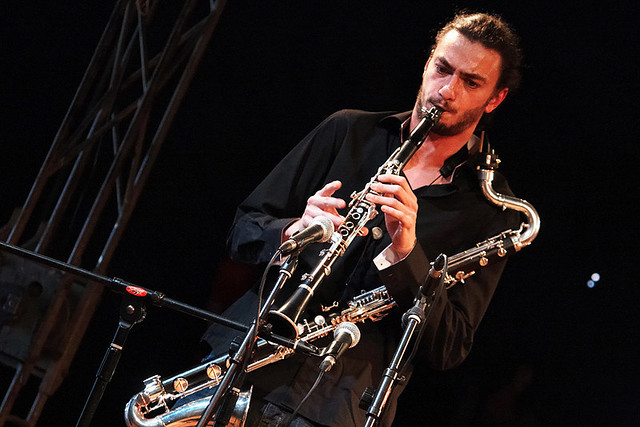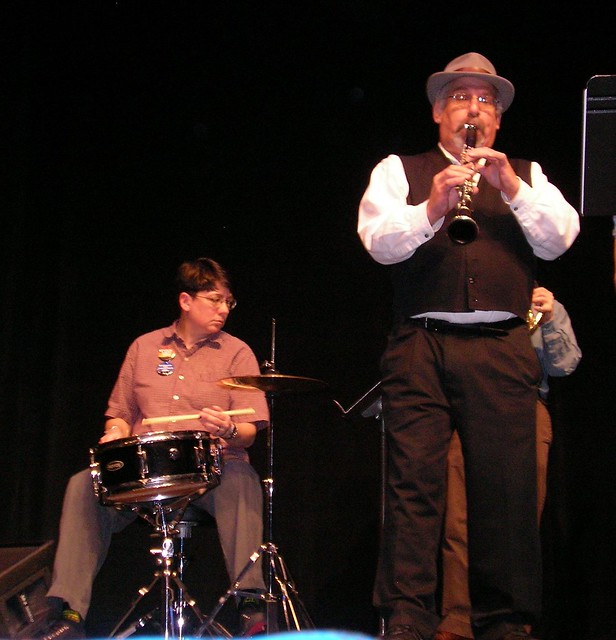 |
| Photo by aleske |
So the Klezmer is the instrument of the song, the vessel of the voice. At the origin, the word klezmer was employed to designate the itinerant Jewish musicians (the plural is "klezmorim") who were playing at weddings and celebrations, traveling from village to village. The Jewish folk music had many cultural and geographical influences. Although being essentially an Ashkenazi music the impact of the Oriental, Greek, Turkish, Jewish and non-Jewish communities living in the Ottoman empire was not negligible.
Wherever they were, The musicians picked up music from the people living around them, the Gypsies, Romanian, Ukrainian, Moldavian, Lithuanian, Polish and many others. But in spite of or maybe thanks to all those external influences the Klezmer kept his particularity, his characteristics, and his unmistakable sound. At the beginning of the 20th century, this music style was indexed as Jewish music, Yiddish folk music or even as "Bulgar", but gradually the word Klezmer began to refer to the style and the repertoire.
It is probably Moshe Beregowsky, a Russian-Jewish ethnomusicologist who used for the first time the term Klezmer as the music performed by the Klezmorim. In the seventies, while the Klezmer revival occurred, the word was definitively adopted as the generic term for the musicians and the music style.
Hence, while the music itself is a few centuries old, the word Klezmer is a kind of neologism. In fact, the juxtaposition of klezmer and music is a tautology, a redundancy. Although the Klezmer is a secular music, its roots are religious, liturgic. The fact is that globally and in every culture, music has always a religious or mystical origin. It is a way to accompany the rites or the ceremonies, to reach a state of trance and to approach the divinity.
Klezmer is not an exception, the Psalms of King David in the Bible are maybe the first apparition of structured music. The Klezmer adopted also the intonation and the voicing of the cantor at the synagogue. The Klezmer is not playing, but rather he is singing through his instrument, hence first the violin and then the clarinet were the instruments of predilection for the Klezmer because they are very close to the human voice.
The art of klezmer is an art of interpretation, many players can play the same tune, the same melody, the same nigun (nigun in Yiddish means a wordless melody), but it will always sound different because each musician is expressing his deep emotions and revealing his own soul. Giora Feidman, the great clarinet Klezmer player called this "the inner voice". Maybe the Klezmer is the most appropriate musical expression to show off sentiments, feelings, sensibility. It can be joyful, it can cry, it can burst out laughing or burst into tears.
But in spite of this ambivalence, there is always a message of hope.
|



